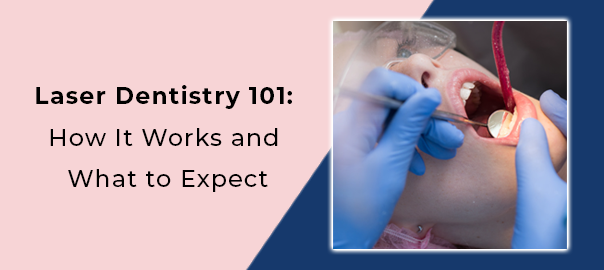
Laser Dentistry 101: How It Works and What to Expect
Its 2024 and Lasers have entered into the dental multiverse. It has revolutionized dental care, offering precision with less invasion. It has become a popular alternative to traditional dental procedures. But how does it work, and what can patients expect from the procedure? Let’s dive in to understand better.
The Science Behind Laser Dentistry
LASER stands for Light Amplification by Stimulated Emission of Radiation. It involves the use of light energy in a focused beam to remove or reshape gum tissues. In dentistry, they cut, vaporize and act as a heat source to enhance the effect of the treatment. These lasers can target specific areas with incredible precision. The surrounding areas tend to remain unaffected.
Lasers allow dentists to treat issues with greater accuracy and reduced discomfort.
Types of Lasers Used
Dentists primarily use three types of lasers:
1. Diode lasers: Ideal for soft tissue procedures like gum reshaping
2. Erbium lasers: Suitable for both hard and soft tissue treatments
3. CO2 lasers: Primarily used for soft tissue surgeries
Safety Measures
Safety is paramount in laser dentistry. Both dentists and patients wear protective eyewear during procedures. Strict protocols ensure proper laser usage, and regular equipment maintenance is essential.
Common Laser Procedures
Laser dentistry is versatile, used in procedures such as:
– Teeth whitening
– Gum disease treatment
– Cavity detection and treatment
– Soft tissue surgeries
Pros and Cons
Pros:
– Minimally invasive with less bleeding and swelling
– Often reduces need for anesthesia
– Faster healing times
– Increased precision
Cons:
– Not suitable for teeth with existing fillings
– Can’t be used for all dental procedures
– More expensive than traditional methods
– Potential risk of gum or pulp injury if not used correctly
Patient Experience
Many patients report a more comfortable experience with laser dentistry. Procedures are often quicker, less painful, and require shorter recovery times. Post-treatment care is typically straightforward, as patients experience less swelling and bleeding.
Comparison to Traditional Methods
| Aspect | Laser Dentistry | Traditional Methods |
|---|---|---|
| Precision | High | Moderate |
| Healing Time | Reduced | Standard |
| Patient Comfort | High | Variable |
| Cost | Comparable | Comparable |
As technology advances, laser dentistry continues to evolve. It keeps on offering exciting possibilities for the future of dental care. If you still have your doubts about if Lasers are the way to go for you, feel free to reach out to your nearest Clove Dental for expert advice and consultation.
Leave a Reply
Leave a Reply
Explore More Similar Posts
Explore More Blogs


Leave a Reply